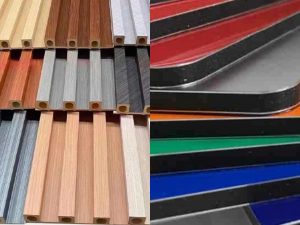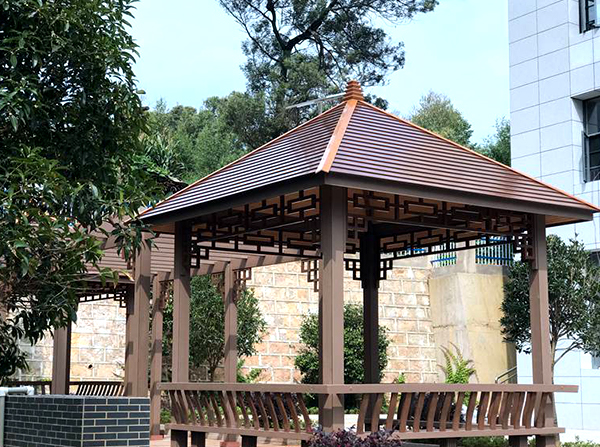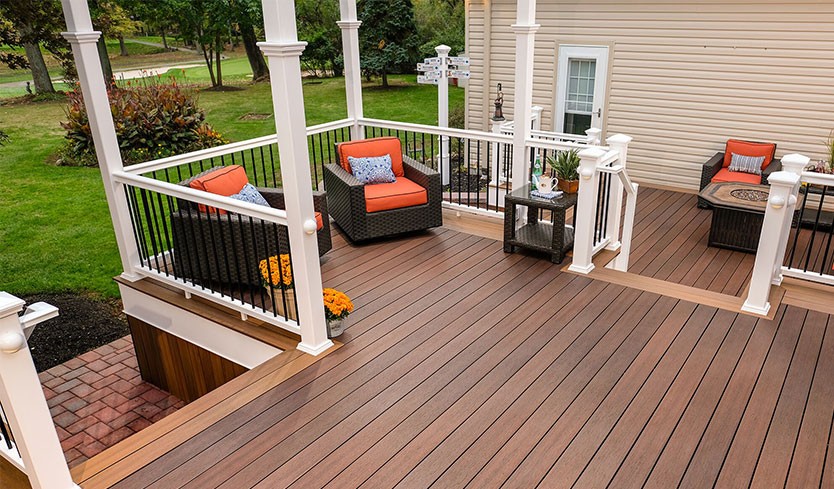In this fast-paced era, quality materials alone are no longer sufficient. We must also consider our commitment to environmental protection and sustainable development. As we stand at the crossroads of choices in building materials, one side offers the traditional and robust Aluminum Composite Panels (ACP), while the other presents the emerging and eco-friendly Wood-Plastic Composites (WPC) panels. How will you choose? Will you adhere to tradition, or will you embrace innovation? Today, we delve into a detailed comparison of these two materials to discern which one holds the key to the future of construction.
Whether you are a designer, an engineer, or an ordinary consumer, it is essential to set aside any preconceived notions and approach this evaluation with an open mind. Let us embark on this journey to uncover the strengths and weaknesses of WPC panels and Aluminum Composite Panels, and determine which material truly stands out.
Table of Contents
Aluminum Composite Panels (ACP)
Material Composition
Aluminum Composite Panels consist of two layers of high-purity aluminum alloy enclosing a non-toxic, low-density polyethylene (PE) core. This composition, introduced to China from Germany in the late 1980s, combines metal and non-metal materials to retain their beneficial properties while mitigating their respective shortcomings.
Performance Characteristics
ACP panels are renowned for their superior peeling resistance, lightweight nature, ease of processing, and exceptional fire resistance. They also boast strong impact resistance, impressive weather resistance, a variety of coating colors, and easy maintenance. These properties make ACP panels suitable for a range of applications including building facades, curtain walls, renovation projects, indoor decorations, advertising signs, and purification projects.
Application Fields
ACP panels are versatile, finding uses in building facades, curtain walls, old building renovations, indoor wall and ceiling decoration, advertising signage, display stands, and more. Their adaptability and durability have made them a popular choice across various sectors.
Environmental Impact
Despite their advantages, the production of ACP panels can have environmental repercussions, and their recycling process is relatively complex. This introduces a level of environmental concern that needs addressing in the quest for more sustainable materials.

Wood-Plastic Composites (WPC)
Material Composition
WPC boards are made from a blend of plastics such as polyethylene, polypropylene, or polyvinyl chloride mixed with over 50% waste plant fibers like wood flour, rice husks, and straw. This composition turns waste into a valuable resource, making WPC a 100% recyclable and environmentally friendly product.
Performance Characteristics
WPC panels offer excellent workability similar to traditional wood, allowing for sawing, nailing, and planing. They demonstrate superior strength, water and corrosion resistance, UV light stability, and good color retention. These characteristics make them ideal for various applications while providing better environmental performance compared to many other synthetic materials.
Application Fields
WPC boards are predominantly used in building materials, furniture, logistics, and packaging industries. They effectively replace solid wood in numerous applications, including outdoor flooring, flower box boards, and decorative panels.
Environmental Impact
The standout feature of WPC panels is their environmental friendliness. They are manufactured from recycled materials and can be fully recycled themselves, thus avoiding the issue of “white pollution.” This makes them a truly green product that supports sustainable development.
Summary and Conclusion
Both aluminum composite panels and WPC boards offer distinct advantages, but from the perspective of environmental protection and sustainability, WPC panels are the superior choice. The environmentally friendly production process of WPC panels and their ability to utilize waste materials significantly reduce environmental pollution. Additionally, WPC panels provide excellent processability, durability, and design flexibility, making them a compelling option for various construction and design needs.
Incorporating WPC materials into your projects not only aligns with sustainable practices but also ensures you are investing in a versatile and long-lasting solution. As the construction industry increasingly prioritizes eco-friendly practices, WPC panels stand out as a forward-thinking choice that meets both functional and environmental goals.

As you consider your options, it’s worth noting the role of HOSUNG WPC in this evolving market. Based in China, HOSUNG is a leading provider of Wood Plastic Composite (WPC) solutions, offering high-quality products designed for a range of applications. With a commitment to sustainability and innovation, HOSUNG’s WPC materials combine the natural beauty of wood with the durability of plastic. Their products are crafted to provide exceptional performance while minimizing environmental impact.
HOSUNG’s dedication to research and development ensures that their WPC solutions meet the highest standards of quality and sustainability. Whether you are looking to enhance outdoor spaces with durable decking or need versatile materials for interior design, HOSUNG provides a comprehensive range of WPC products that deliver both aesthetic appeal and environmental benefits. Discover more about how HOSUNG can support your projects and contribute to a greener future by visiting their website or contacting their expert team.








